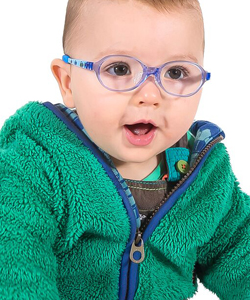1-2% of children have the eye turn, infantile esotropia.
Esotropia, a form of childhood strabismus (eye misalignment), refers to the inward turning of the eye or eyes toward the nose.
The condition can be present all the time, or only intermittently. In some children, esotropia affects one eye, while in others, the deviating eye may alternate.
What is esotropia?
Esotropia is a form of inward eye turn that can be caused by uneven muscular pulling on one side of the eye or ocular muscle paralysis.
The most frequent type of childhood strabismus is congenital esotropia.
Due to a lack of developed vision, some infants appear to have crossed eyes, although this usually resolves as the child grows.
True strabismus does not go away on its own and requires medical intervention from an eye doctor.
What is infantile esotropia?
In cases of true infantile or congenital esotropia, there is a noticeable and large turn of the eye(s).
Infantile esotropia may be present at birth or develop within the first six months of life.
Congenital esotropia that lasts longer than six months rarely, if ever, goes away on its own, necessitating surgical treatment.
The cause of this condition is unknown, but is believed to be due to the brain’s inability to coordinate eye movement.
If you’ve noticed an eye turn in your child, contact an eye doctor near you.
SEE RELATED: Accommodative Esotropia: Real Patients
Signs of infantile esotropia
One eye turns in
Parents may notice that one or either eye turns inwards towards the nose either all the time or very frequently.
Decreased Visual acuity
About 50% of children with congenital esotropia develop amblyopia (‘lazy eye’). This can be discovered if one eye is covered and the child struggles to see normally.
Refractive errors
Infantile esotropia with hypermetropia greater than +2.50 diopters must be distinguished from accommodative esotropia, which can develop as early as 6 months.
Accommodative esotropia is characterized by ocular inversion as a result of increased focusing effort caused by substantial hypermetropia.
Ocular rotation
On initial evaluation of eye movements, certain infants may demonstrate a limitation of abduction as a result of cross fixation. Full abduction can be triggered by the doll’s head maneuver, in which mild spinning of the child generates a vestibular movement in the opposite direction of the spin and a refixation saccade in the same direction.
Associated conditions
75% of patients with infantile esotropia have been found to have dissociated vertical deviation (DVD) – the elevation of the non-fixing eye when covered or with visual inattention.
70% of patients also have inferior oblique overaction. This is seen as over-elevation of the eye in supra-adduction.
In approximately 40% of patients latent nystagmus occurs. Occluding either eye causes a primarily horizontal jerk nystagmus. The slow phase is located on the occluded eye’s side.
How to treat infantile esotropia
This is a condition that does not go away in children. Before determining the best treatment options certain variables must be examined.
Surgery is usually recommended for children between six and 14 months of age.
Older children may need both surgery and vision therapy.
Vision therapy
If a lazy eye (amblyopia) has developed in one eye, it must be treated as soon as possible. This is done through vision therapy using patching and binocular vision therapy.
Patching is performed by covering the better-functioning eye with a patch to force the brain to utilize the weaker eye. Though this will not fix the eye crossing, it will normalize vision, increasing the chances of a successful surgery.
Binocular vision therapy will teach the eyes to work together, this allows for a more comprehensive and long term treatment of the eye turn.
LEARN MORE: Guide To Eye Turns
Schedule an appointment with an eye doctor near you, to find out which treatment option is best for you child.










